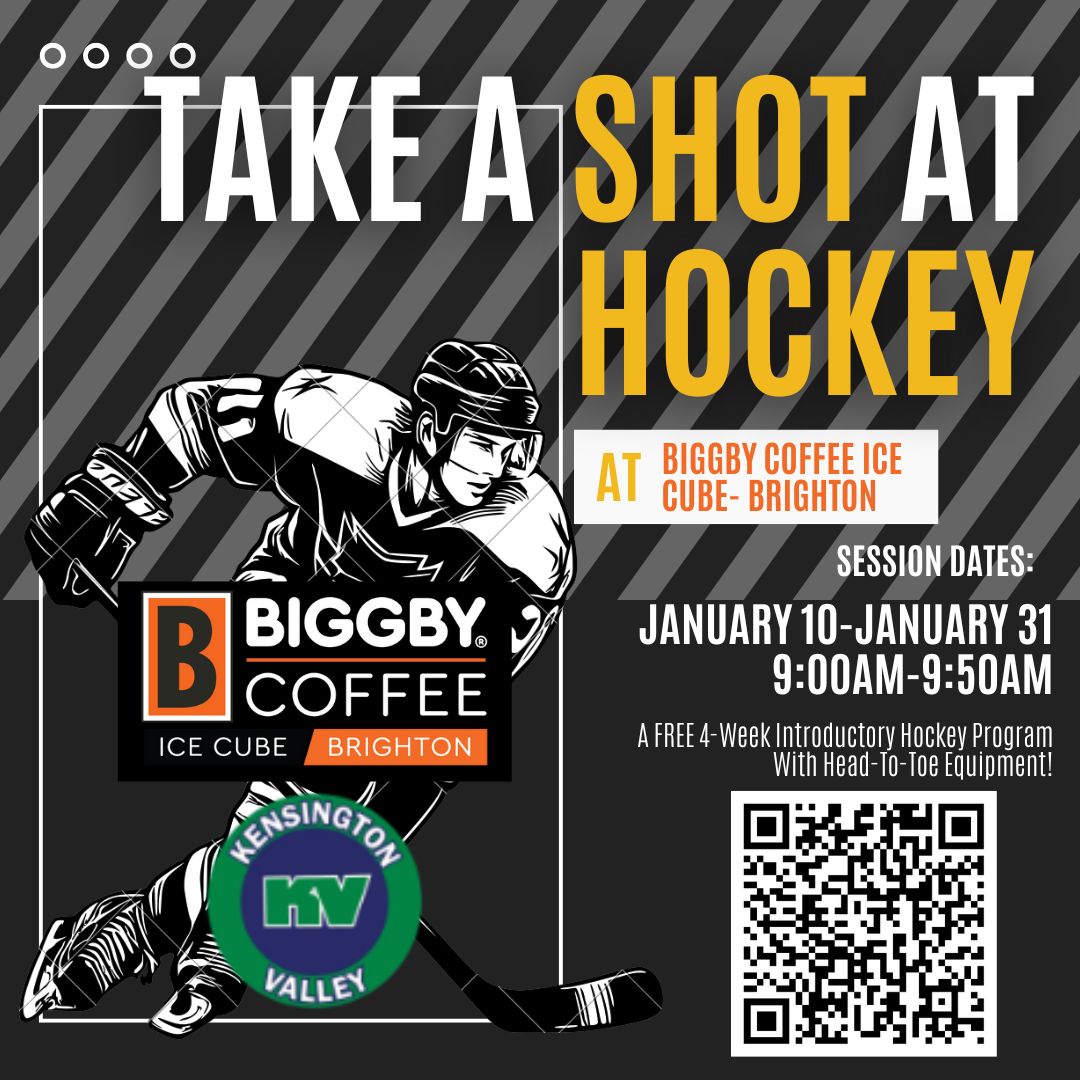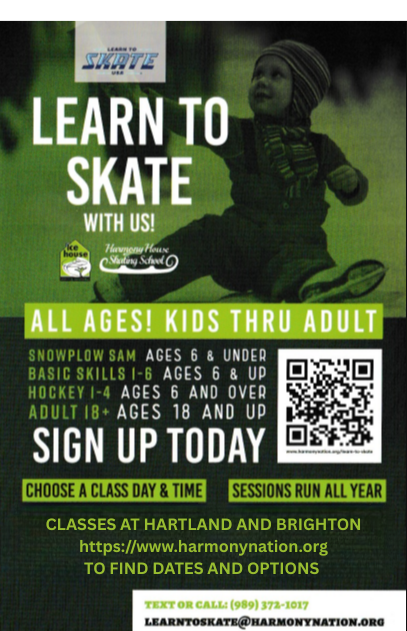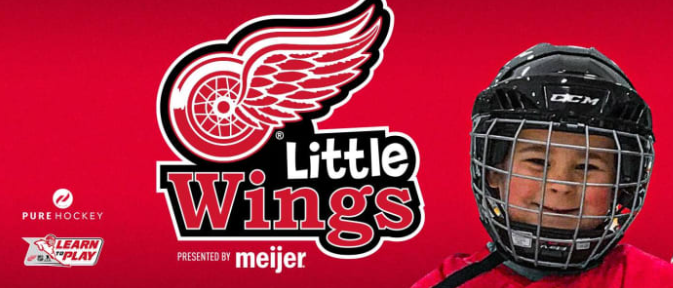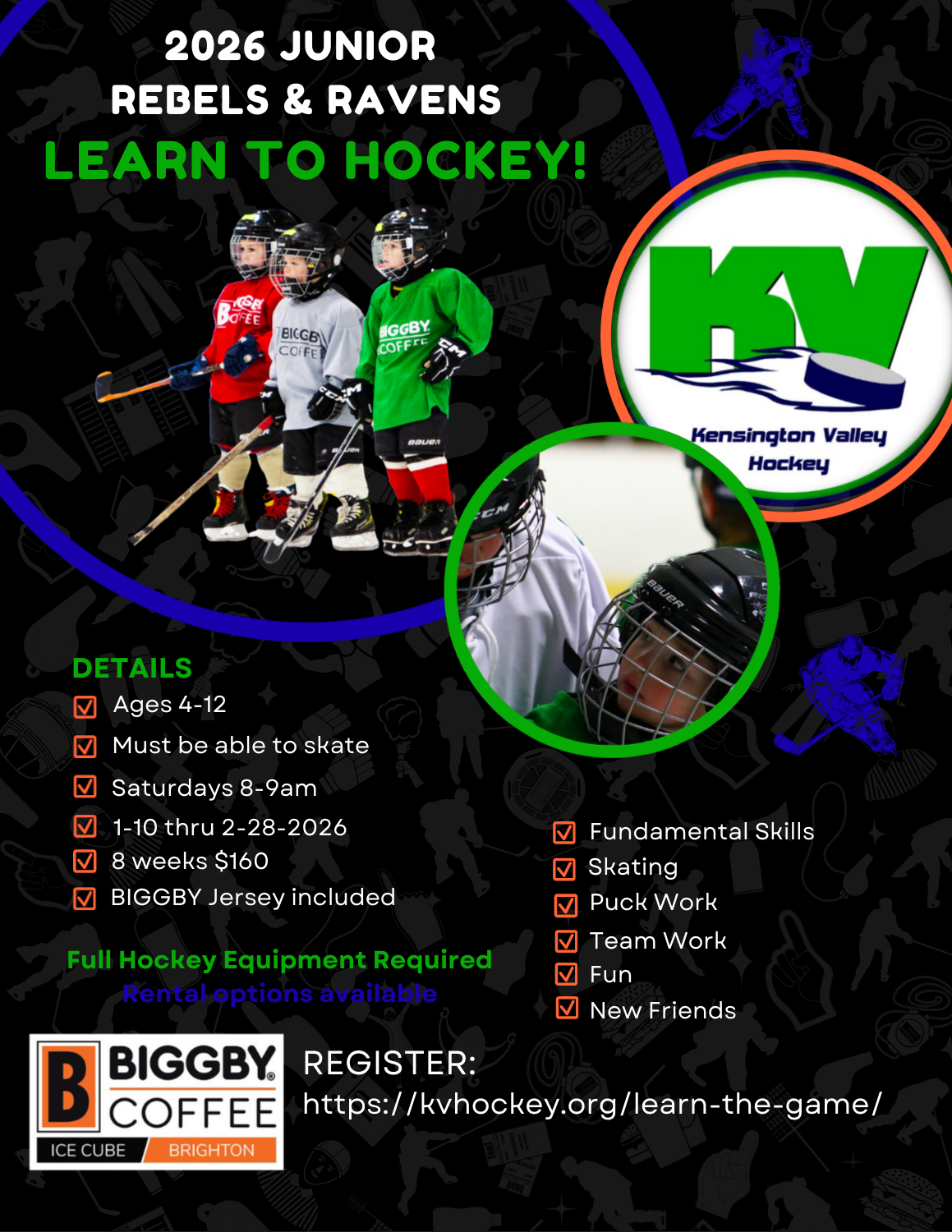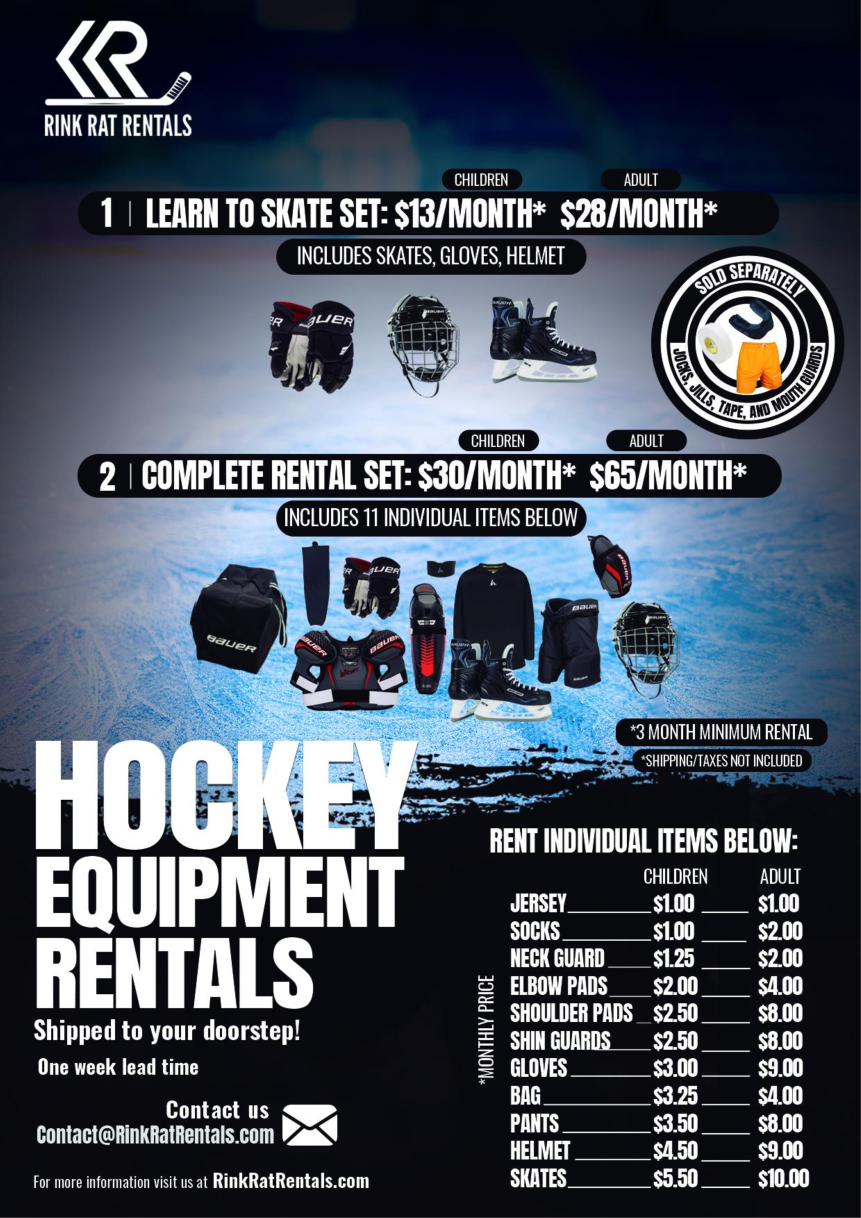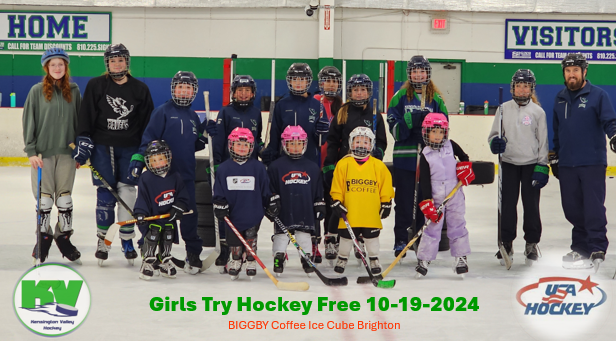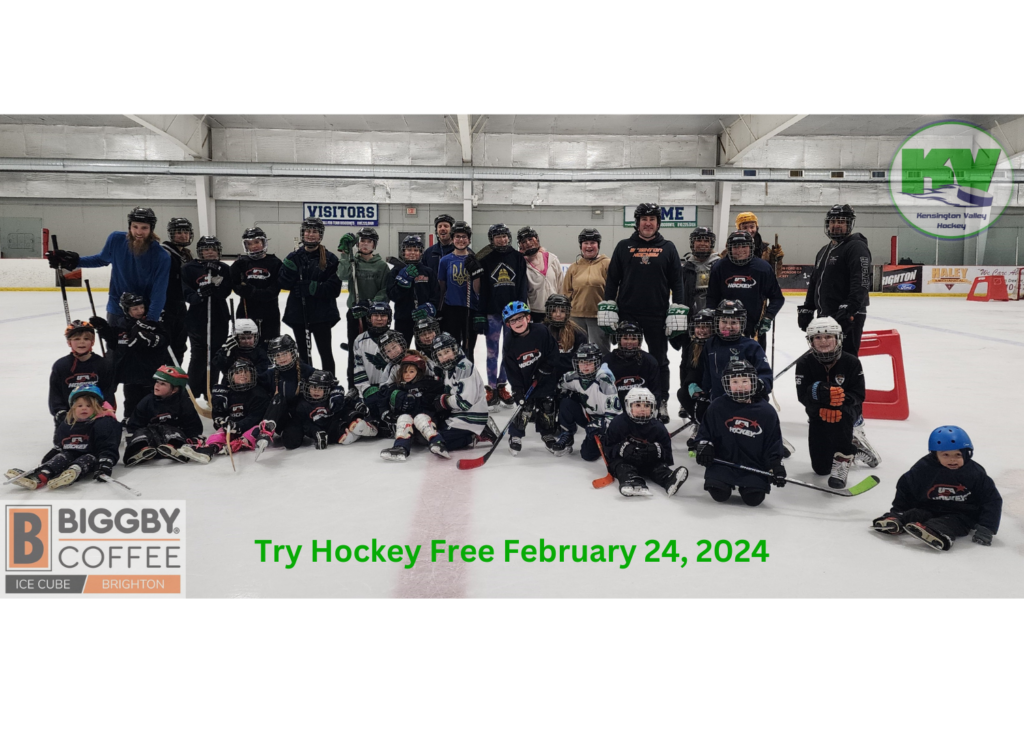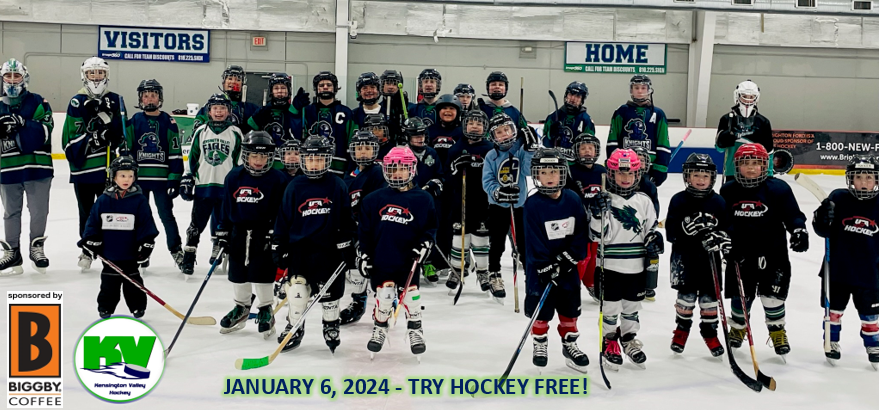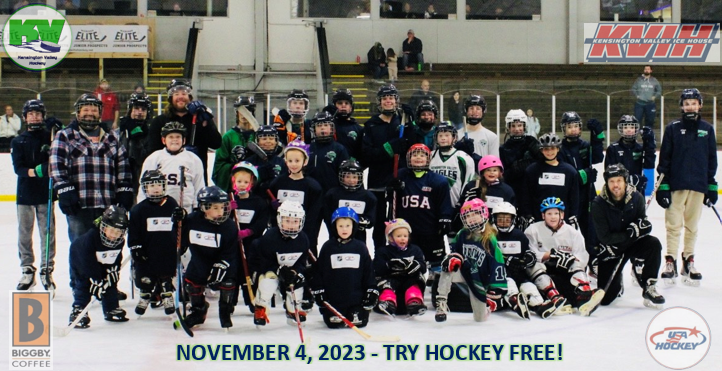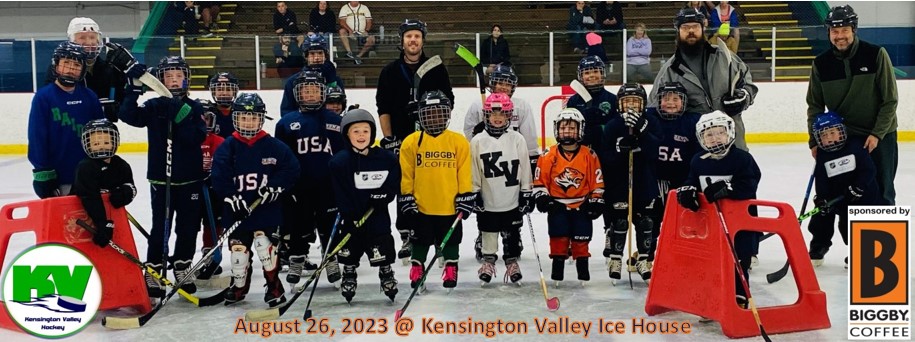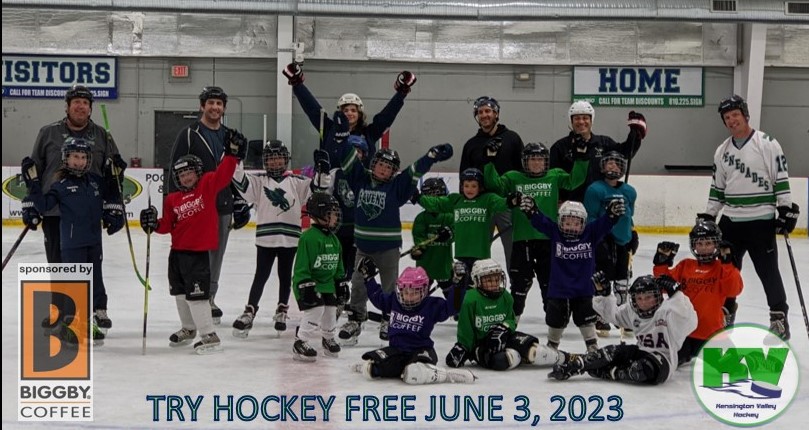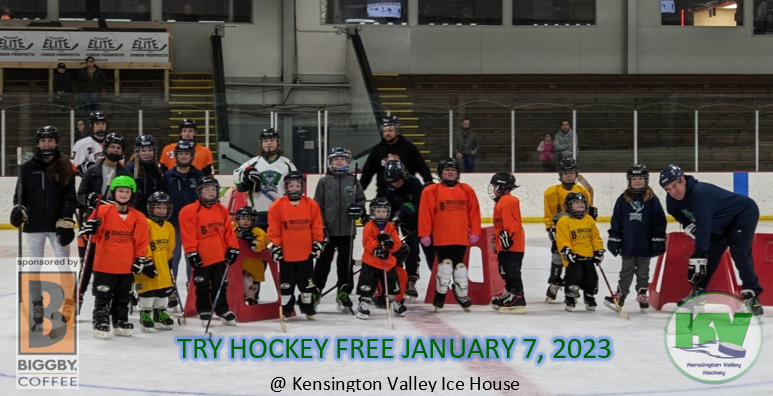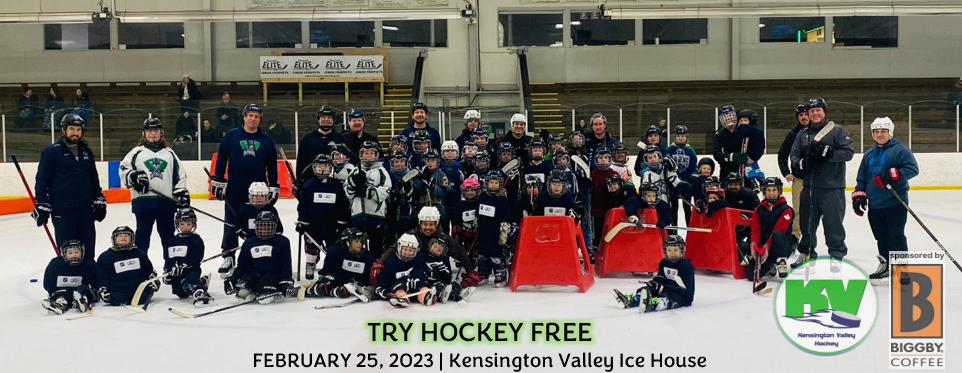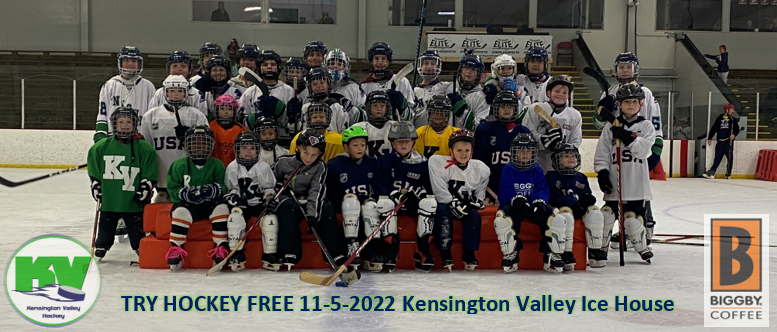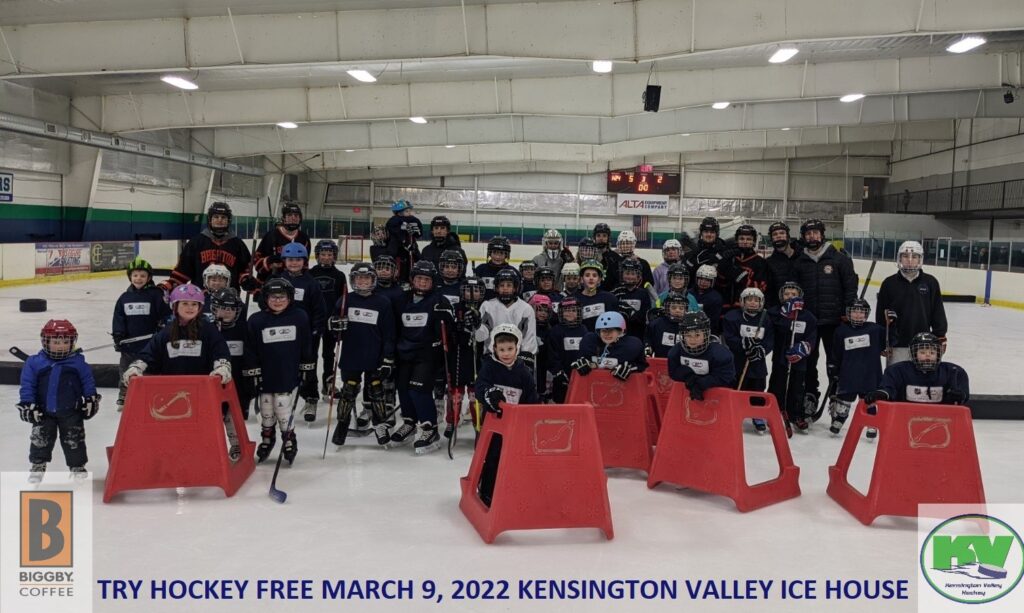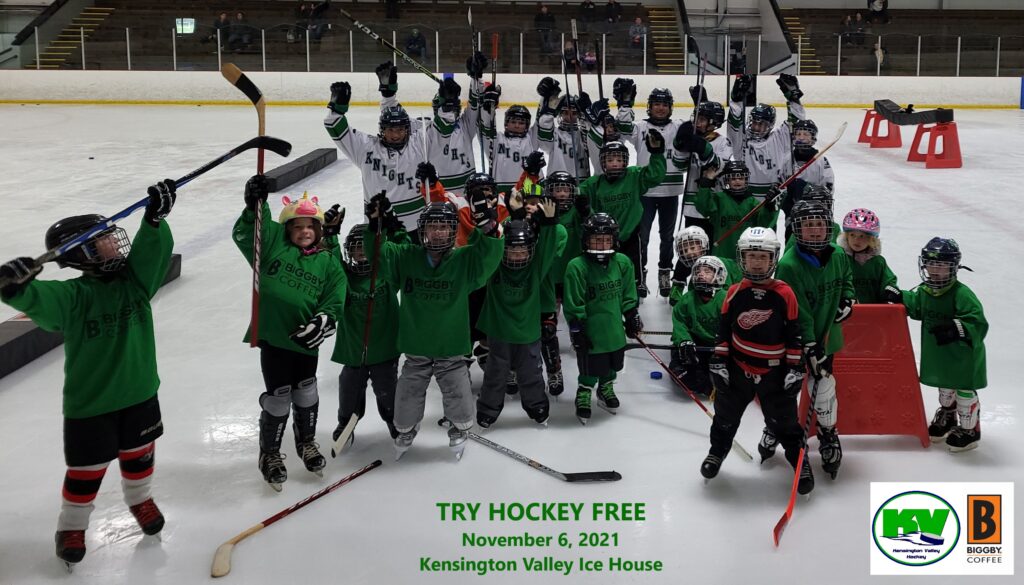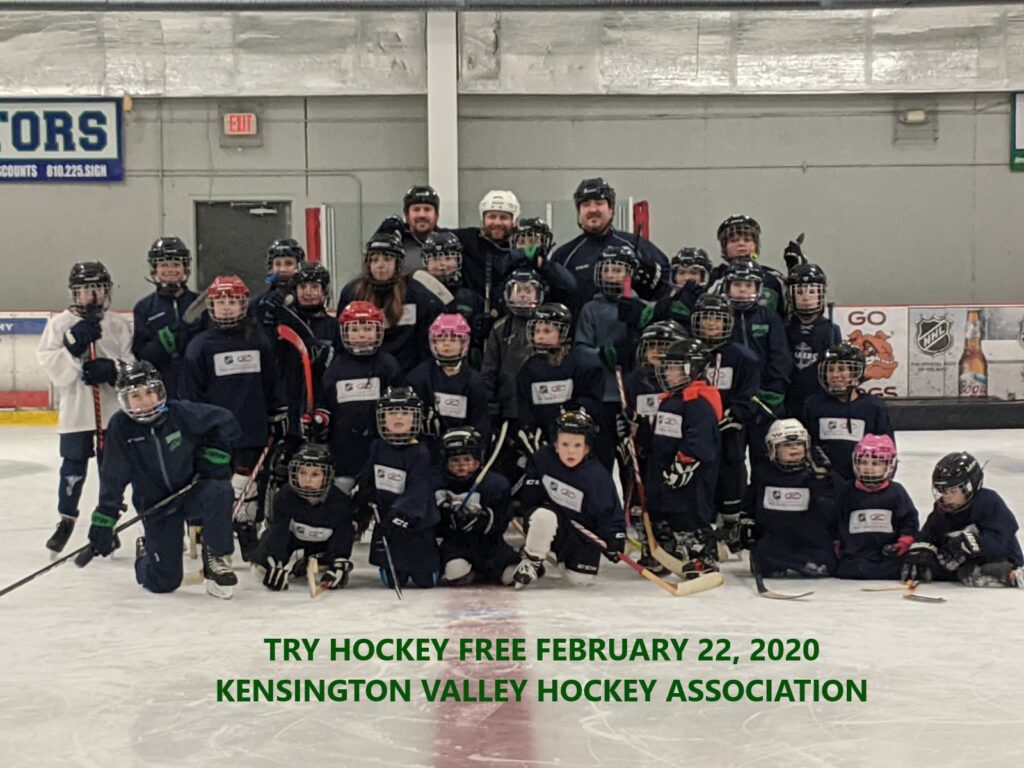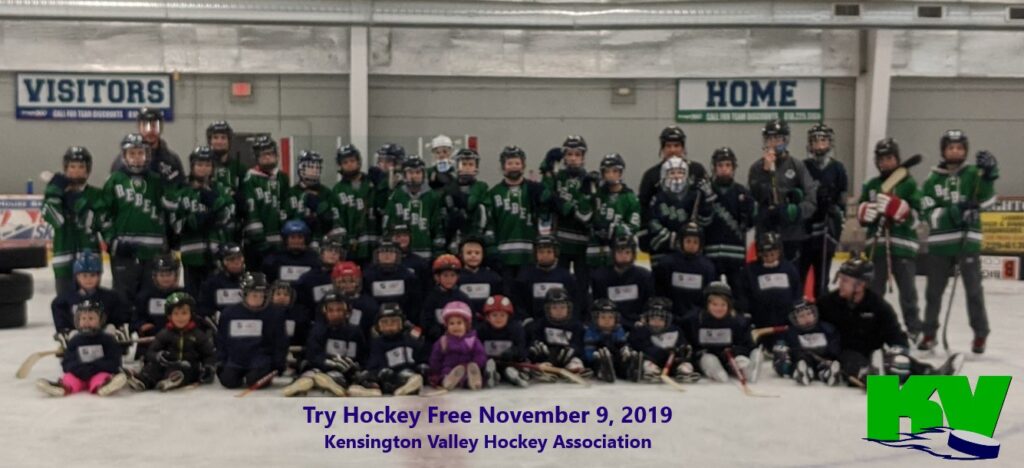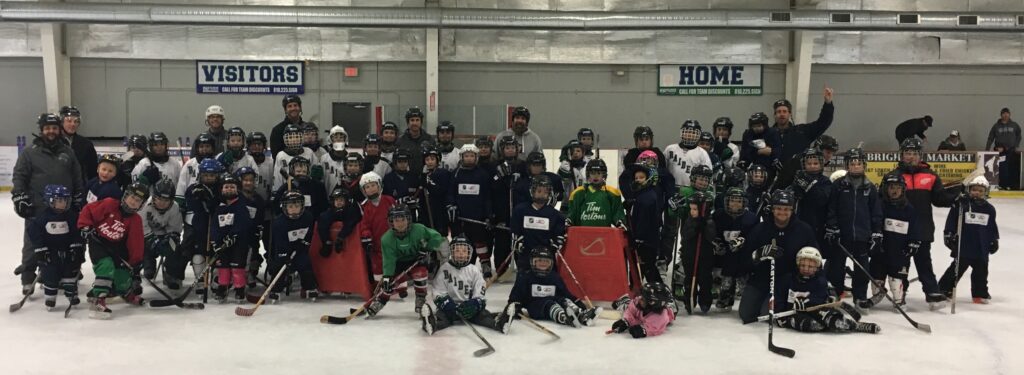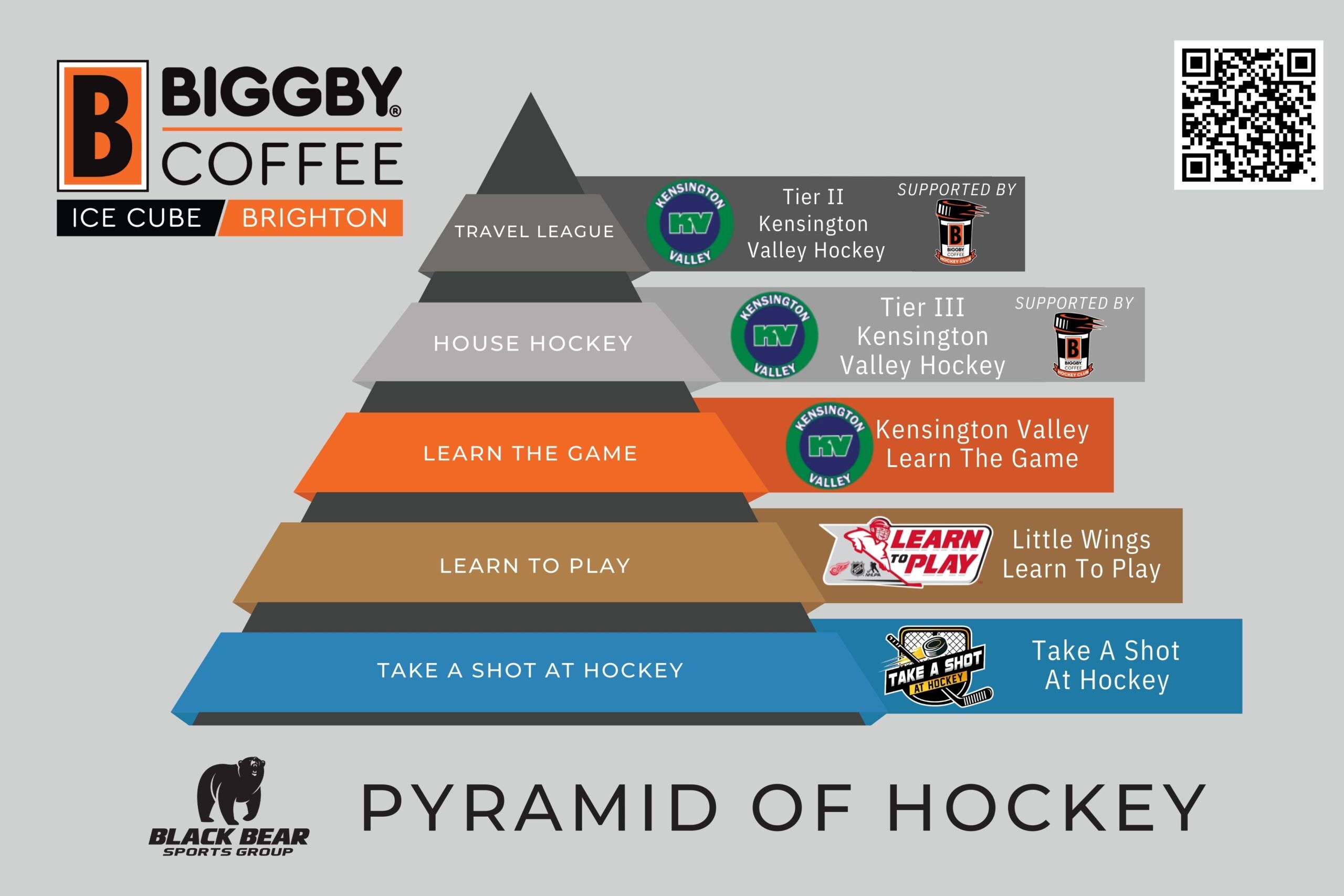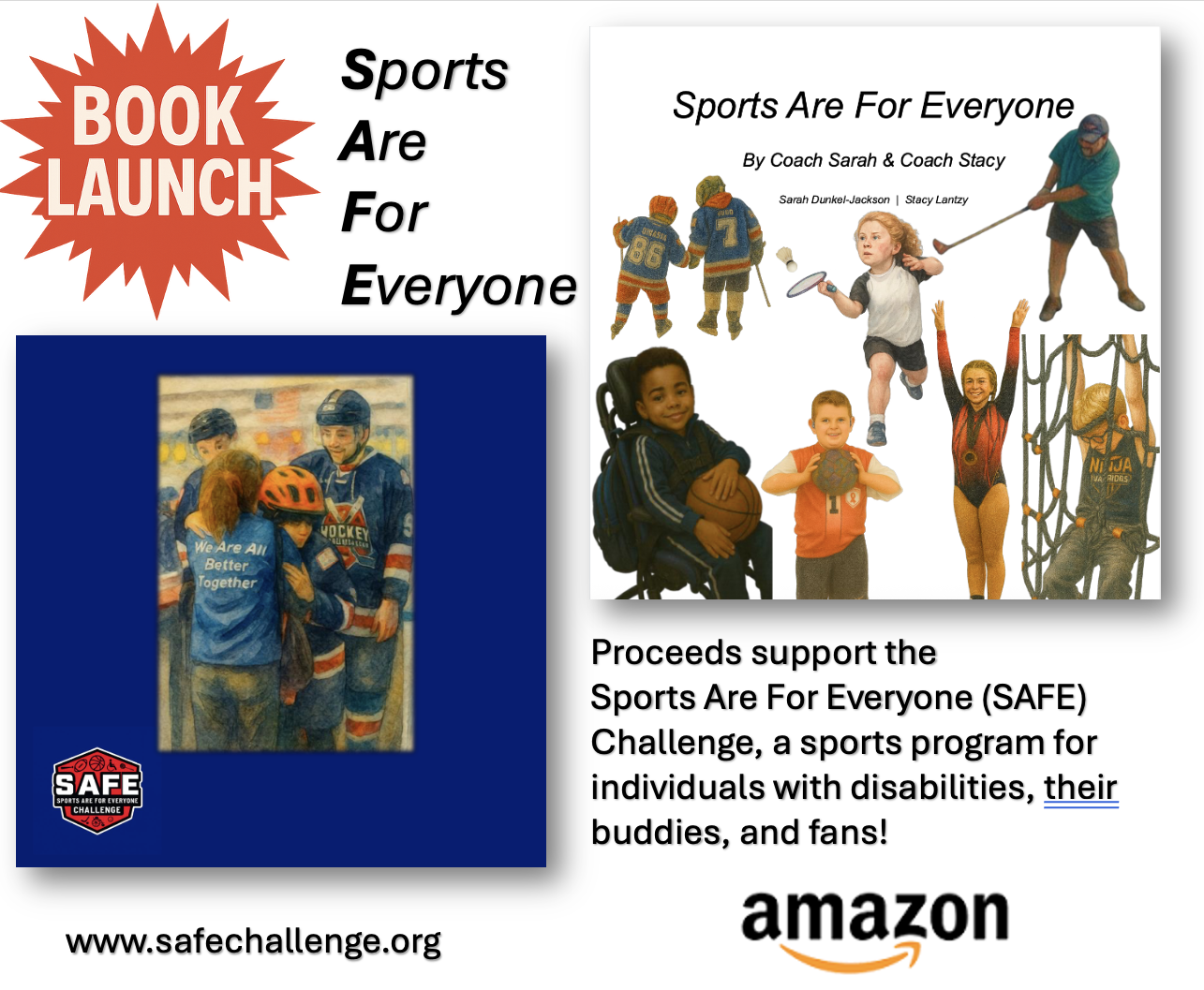Try Hockey for Free and the introductory programs listed here are a great way for children and their families to come to the rink, experience and learn about the sport of hockey in a safe and supportive environment.
If you and your child(ren) choose to play the game of hockey, it will be one of the best decisions you ever make. The game of hockey will provide the backdrop for friendships and memories that last a lifetime!
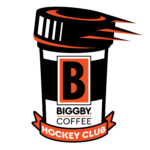
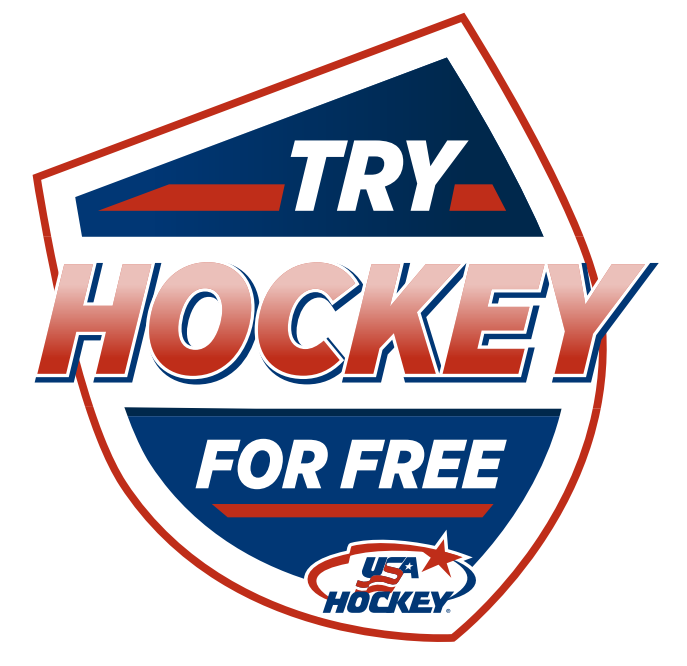
Our next USA Hockey Try Hockey Free date is Saturday January 3 at 945am!
Also check out Take a Shot at Hockey offered by the BIGGBY Coffee Ice Cube Brighton - the next session of TASH begins January 10

USA Hockey Try Hockey Free events are for ages 4-12 years old with limited experience
3-year-olds may participate with a parent on the ice (parent must wear a helmet and skates)
Hockey equipment is available to borrow on a first come first serve basis and we encourage all of our participants to use it to get the full hockey experience!
Helmets are limited in number and sizes so if you do not have a hockey helmet, please bring your own bike helmet. Free rental skates also available. At minimum, all participants should dress warm in snow pants, jacket & gloves or mittens.
This program is open to first time players with some skating experience, ages 4-9. They receive a set of rental hockey equipment, including skates, to use for the four-week program to try it out.
If your child loved trying hockey for the first time, the next steps are....
Little Wings Program
- For children ages 5-9
- Six (6) sessions of on-ice instruction
- Full set of Little Wings-branded hockey equipment included in the cost
- Children must be age 5-9 and never been on a registered USA Hockey team.
- Participants are only allowed to attend on-ice sessions at the rink they register.
- Participants must be able to skate the width of the ice with no assistance to enroll
- Open to Michigan residents only
Email Coach Brendan Prappas for more information
bprappas@biggbycoffeeicecube.com
AFTER LITTLE WINGS, PLAYERS CAN JOIN the BIGGBY LEARN to PLAY the GAME PROGRAM or JOIN a KVHA HOUSE TEAM
Placing players on house teams' mid-season is subject to availability. Fall/Winter Registration opens June 1 and House teams begin skating in August through March. Spring Season is April/May and registration opens mid-February.
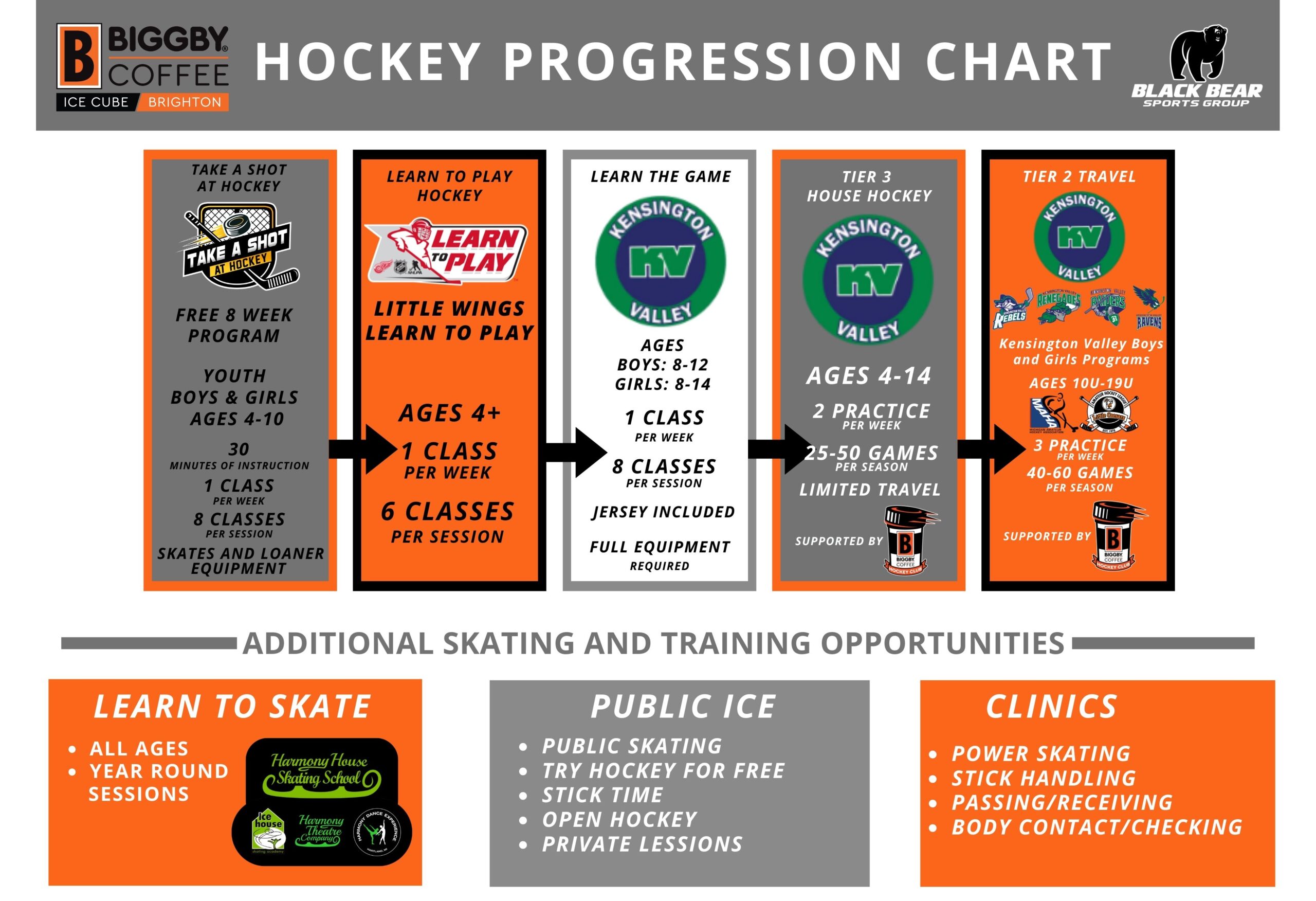
NEW HOCKEY PARENTS START HERE!
We hope this is the beginning of a lifelong hockey journey for you and your child!
These tabs have been created to help parents and fans learn more about the basics of hockey.
The resources here will give you an idea of the types of programs available at KVHA, the ages and skill level for those programs, about the necessary equipment as well as information about the game we love so much.
The fastest game on ice is thrilling to play and an excellent way to help your child meet new friends and develop skills that will help them, not only on the ice, but in their daily life!
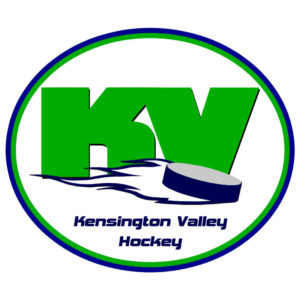
Kensington Valley Hockey Association (KVHA) is proud to serve Howell, Brighton, South Lyon, Milford, Hartland and the surrounding communities with over 50 hockey teams at Tier 2 & Tier 3 levels. From Learn to Play Hockey up to 19U Girls and everything in between, we are one of, if not the largest association in the state with over 850 kids skating with our teams. We welcome you, whether you are brand new to the sport or at the top of your game, we have a place in our hockey family for you. Reach out to office@kvhockey.org with any questions!
KVHA is a non-profit organization administering the youth hockey program that skates our of KVIH and HIH. We do not own or operate the Kensington Valley Ice House or Hartland Ice House. The KVHA office is located inside of the Kensington Valley Ice House (KVIH)
HOCKEY PROGRAMS OFFERED THROUGH KVHA
The KVHA and all of our teams are affiliates of and governed by the rules and policies set forth by USA Hockey and The Michigan Amateur Hockey Association.
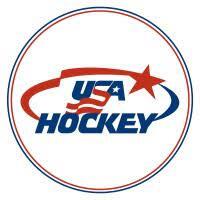
USA Hockey provides the foundation for the sport of ice hockey in America; helps young people become leaders, even Olympic heroes; and connects the game at every level while promoting a lifelong love of the sport.
Beyond serving those who play the game at the amateur level, USA Hockey has certification programs for coaches and officials, inclusive of industry-leading online education modules, to ensure standards are met that coincide with the level of play. Furthermore, a large focus is put on parent education with equipment needs, rules of the game and parental roles in youth sports among common topics. Members of the organization are entitled to many benefits, including excess accident, general liability and catastrophic insurance coverage; access to USAHockey.com; and opportunities to participate in USA Hockey National Championships, as well as player development camps.
For information on USA Hockey, its history and where they are today visit the following link: www.usahockey.com/page/show/836187-about

The Michigan Amateur Hockey Association (MAHA) is a sanctioned affiliate of USA Hockey whose purpose is to develop and encourage sportsmanship between all players for the betterment of their physical and social well-being. The association supervises the activities of thousands of amateur hockey teams, and tens of thousands of players, using a volunteer workforce of elected and appointed officials. MAHA administers amateur hockey in Michigan through seven established districts. Each District is responsible for the local teams and Associations in their area.To Learn more about The Michigan Amateur Hockey Association, please visit: www.maha.org/page/show/1204692-about-maha
KVHA is located in MAHA's District 4: https://www.mahad4.org/
There is no need to push your child, success should be in stages, especially with children who are more reserved. Bringing them to the rink and showing them around first is a great way to get acquainted. Try open skating, sticks and pucks or skating on a pond. Register for a Try Hockey event or a learn to skate class. The main thing is ICE TIME! Once they start asking to come back for more, its time to progress to a Learn to Play Hockey class or even a Mini Mite/Mite team.
Be patient and let your kids enjoy it at their own pace. At the end of the day, it’s a game, and it’s supposed to be fun. It’s not about wins and losses, goals and assists, especially at the younger and recreational levels. Hopefully your child learns to love the game, makes lifelong friends and memories, and learns important lessons along the way.
In the words of the late Bob O’Connor, former USA Hockey national coach-in-chief: “To win the game is great. To play the game is greater. To love the game is greatest of all.
HOCKEY 101 FROM THE HOCKEY WRITERS
8 TIPS FOR HOCKEY PARENTS TO ENSURE AN ENJOYABLE SEASON FOR YOU AND YOUR CHILD
CLICK HERE MORE INFORMATION FOR NEW HOCKEY PARENTS
KVHA FOLLOWS THE AMERICAN DEVELOPMENT MODEL (ADM)
USA Hockey introduced the American Developmental Model (ADM) after an extensive international study by USAH of educators, child development experts, coaches (from many different sports), physiologists and National Sports Federations. The ADM goal is to provide a building block approach to developing athletes starting from the earliest stages of participation, thus increasing the athlete’s skill, enjoyment and proficiency.
The USA Hockey ADM is an all inclusive program starting from the U8, Learn to Play (LTP) levels all the way to elite athletes competing at the Professional level. The ADM also addresses improved coaching techniques and Referee development. This program includes on-ice, off-ice, in-season and off-season curriculum for producing a well balanced complete athlete. It defines what is to be emphasized at what age to ensure proper skill development for each age level. The ADM also defines how much and what kind of competition is needed at each level.
WHAT IS USA HOCKEY’S AMERICAN DEVELOPMENT MODEL? The ADM is USA Hockey’s nationwide player-development program for youth hockey associations. It’s based on age-appropriate, age-specific competition and training for boys and girls, beginning with their first steps onto the ice and carrying them through age 18 and beyond. The ADM places a heightened emphasis on skill development and long-term athlete development principles, providing a blueprint for the best possible youth hockey experience. Put simply, it’s doing what’s best for kids.
HOW DOES THE ADM HELP PLAYERS REACH THEIR FULL POTENTIAL? First and foremost, by enhancing athleticism and emphasizing skill development. Through science and experience, we’ve learned that the world’s elite athletes were almost never early-age specialists. They enjoyed a variety of sports and activities. They climbed. They swam. They biked. In short, they were kids. The ADM lets kids be kids. It encourages them to have fun and it amplifies their all-around athleticism through programming developed by hockey experts, sport scientists and child development specialists. This programming lifts the lid off kids’ athletic potential, blending with science to create a full toolbox of athleticism. When they apply it to hockey, good things happen. When we complement it with age appropriate, age-specific skill training, good becomes great.
HOW DOES THE ADM LOOK? At the younger age levels, it looks like fun and constant motion in small spaces. The ADM encourages station-based practices, small-area games and cross-ice competition to deliver more repetitions, more puck touches and more skill development per hour of ice time. It provides the most efficient, most engaging development path for children, keeping them both in the game and on a path toward their full potential. The ADM encourages a 3:1 practice-to-game ratio at these younger levels, while also making hockey more family-friendly. The ADM emphasizes development at players’ local hometown rinks in 8U, 10U and 12U hockey. This emphasis helps children benefit from more skill development, less burnout and less family financial burden. As children progress in age, the ADM progresses with them, providing age-specific training and competition proven to produce Olympic and NHL-caliber players.
For more information on the ADM Model and program visit their website and www.admkids.com.
To demonstrate how a full sheet of ice looks to a child, USA Hockey put adult players on an extra large
rink with giant nets to simulate what a child sees. The players found the games tiring, difficult and said they
would lose interest quickly in the sport if that was what they faced. See how adult players opened their eyes
to what is being taught by the American Development Model of cross-ice hockey and small-area games.
Learn more at ADMKids.com
WHY ADM ???
How can the sport of hockey be so important – instrumental even – in the future success of a young man or woman? After all, it’s just a game. But it can be so much more than that. It’s a beacon of hope for wayward kids. A fitness program to fight the epidemic of childhood obesity. A meeting ground for lifelong friends. But at its heart hockey is, and should be, fun. A chance for kids to pour out their passion and creativity on the ice. For them to learn and grow with every practice. To just be a kid and enjoy the game. That’s what the ADM is all about.
So while we honor our past accomplishments, we need to look ahead and create a brighter future for all. With your guidance, the ADM will provide those great moments for our kids. That is, if we’re forward-thinking enough to see it through.
Put yourself in the shoes of an 8-year-old and ask yourself some questions. What’s important to you? What kinds of things do you want to be doing? (And, maybe most important, what’s for dinner?) Now list the things that would be appealing to the 8-year-old you. Family. Playing with friends. Goofing off. Because this is what kids do. They act like kids.
There isn’t a parent, teacher or coach who wouldn’t agree that today’s kids are brimming with potential. And there’s that word: potential. It’s the great “what could be” in a kid – if given the proper push. A push from an encouraging parent, great friend or dedicated coach. Wherever that potential forms, it takes time to develop and it’s different for each kid. The potential to be a doctor. A Hollywood star. An NHL center. The mission of the ADM is to pull out that vast potential in every kid.
VOLUNTEERS NEEDED
Our programs are a success only because of the outstanding efforts of our volunteers. We are always looking for help on and off the ice for all of our programs. All volunteer positions are important, it takes a village and hockey is one giant family!
Learn how to run the score clock, be a locker room parent, organize a snack, party or fundraiser, take pictures and share them with the families! All of those thing are appreciated and add to the memories!
The more off ice volunteers we have, the more fun that can be had by all.
Additionally, the more coaches we have on the ice, the more that can be accomplished and the better support the players will receive.
If you are a parent who wishes to help in any capacity, please contact your team manager or head coach.
THANK YOU!
Hockey equipment is a big investment; The guides posted here will help parents and players select appropriate equipment before stepping on the ice while learning how to take care of it to make it last. Proper care of equipment helps make sure that it continues to provide safety in case of an accident and is comfortable so that it doesn’t interfere with their play.
Key Points for Parents
- Don’t let you child skate with the wrong sized equipment; make sure that it continues to fit properly.
- Replace any problem equipment immediately.
- Make sure skates are always sharp.
- Use skate guards to protect the blade and guard against injuries
- When starting out in Learn to Skate or Play, write the name of your child on a piece of white hockey tape and place it on the front top of their helmet. This will help the coaches learn your child's name and get their attention during their sessions on the ice
- Check your son/daughter's helmet to ensure it is not expired. The expiration sticker is found on the back of the helmet.
- These can be checked by an official at any game and expired helmets will not be allowed on the ice!
- Learn more about this safety designation: https://hecc.org/index.html

ALL OF OUR PROGRAMS REQUIRE FULL HOCKEY EQUIPMENT
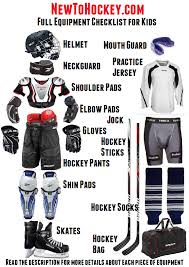
- HOCKEY HELMET WITH A FULL CAGE OR BUBBLE SHIELD
- HOCKEY SKATES
- HOCKEY PANTS
- CHEST PROTECTOR/SHOULDER PADS
- ELBOW PADS
- SHIN PADS
- HOCKEY GLOVES
- MOUTHGUARD
- SPORTS CUP
- NECK GUARD
- JERSEY
- HOCKEY SOCKS
USA HOCKEY RULES REGARDING EQUIPMENT
NECKGUARDS The use of safety equipment is extremely important to all those who play hockey. Our intent is to always have a fun, safe time while we play hockey. USA Hockey is concerned about neck lacerations and the potential catastrophic involvement of arteries, veins and nerves. To date there is no data to describe the prevalence of such an occurrence, the severity, or whether or not a neck laceration protector (neck guard) reduces risk or severity.
While USA Hockey recommends neck-guards for all participants (especially goalkeepers), they are not required at any level of the game under the current Playing Rules. KVHA HAS ADOPTED OUR OWN POLICY AND REQUIRE ALL PLAYERS & GOALTENDERS TO WEAR NECK-GUARDS DURING ALL ICE TIMES AS AN EXTRA SAFETY PRECAUTION.
Neck guards and mouth guards are to be worn properly during all ice time. Neck Guard must be a device in which the design intent was to protect the neck. A rolled up sock taped to the neck it not an acceptable neck protector. Mouth guards dangling out of the player’s helmet are also not acceptable. Safety for the players and goalies is of the utmost importance. It is the responsibility of each parent to ensure that his/her players have the required equipment prior to all practices and games. It is the responsibility of coaches and parents to ensure that the required equipment is used correctly during all ice times.
ICE HOCKEY NECK GUARD INFORMATION
MOUTHGUARDS Today, mouthguards are commonly used by hockey players of all ages and skill levels. Often they are a required piece of equipment, but when they are not most players still wear one. 90% of National Hockey League (NHL) players, for example, choose to use mouthguards even though the NHL doesn't mandate them.
All players, including goalkeepers, in the 12 & under (Youth and Girls’) through Youth 18 & under (including High School) and Girls’ 19 & under age classifications are required to wear a colored (non-clear) internal mouthpiece that covers all the remaining teeth of one jaw, customarily the upper. It is strongly recommended, in all classifications, that all players wear a mouthpiece form fitted by a dentist. While not prevalent, we have seen players with chipped teeth and tongue injuries. There are studies that show wearing a mouth guard can reduce the risk of concussion.
MOUTHGUARDS MAY REDUCE CONCUSSION RISK IN YOUTH ICE HOCKEY
NEW OR SECOND HAND EQUIPMENT? Whether purchasing new or used hockey gear, the most important aspect to consider is that the equipment is properly fitted. When equipment is not suitably fitted, the player is exposed to injury. Borrowed or second hand equipment is a great way to get started but before heading out on the ice, please make sure everything is in game-ready shape. Check helmets for missing or rusty screws, cracks, and ensure the cage/shield is fully attached. Ensure all padding is intact and that all buckles, snaps and velcro are in good condition. Used skates should be taken to a pro shop for a fresh sharpen and inspection as well. Some equipment, like helmets and hockey pants can be adjusted to compensate for growth. Other pieces must be replaced. Young players often outgrow their equipment long before it wears out, so please pass it on, whether to a relative or friend who is learning to play, or donate it back to an association to give other kids a chance to use it.
NEW TO HOCKEY EQUIPMENT BUYING GUIDE
PURE HOCKEY EQUIPMENT BUYING GUIDE
SIDELINE SWAP (Save $7 on your first purchase with code "KVHOCKEY")
HOCKEY SKATES Choose hockey skates based on your position, how frequently you play, your skill level, and your budget. Skates range in price from $100 to $1500+. Factors that increase price include protection, overall weight, boot stiffness, comfort, and durability. Bauer, CCM, and True offer hockey skates of various different prices so there are options for everyone.
As a general rule, your hockey skate size will be 1-1½ sizes smaller than your shoe size. Hockey skates should be snug, but not uncomfortably tight. Achieving a proper fit is absolutely critical to player success. To maintain skates, dry them off in the locker room immediately after your skate before placing in your bag and use blade protectors for safety.
Skate Sharpening
In order for the skates to grip (cut into) the ice properly especially while turning, they should be properly sharpened. Skate blades have edges that cut into the ice and help a skater stay upright while turning. If the edges are nicked, a skater has difficulty making turns and going full speed. To see if a skate needs sharpening, hold it sideways up to the light so that only one edge is between the light source and your eye. Look for any nicks along the blade. Flip the skate and over and examine the other edge in the same way. Then, look lengthwise down the blade to make sure the edges are level. If you have trouble, place a dime on the edges of the blade and make sure it lies flat. If there are no nicks and the edges are level, then the blade does not need sharpening.
HOW TO BUY HOCKEY SKATES - Pure Hockey
FIGURE SKATES? All of our hockey programs require hockey skates because figure skates are unsafe for both the wearer and other players in a hockey setting. The figure skate lacks the protection against cuts or shots, and the extension on the blade to the rear of the back stanchion could impail a falling player or coach. Kids who start out on figure skates, then transition to hockey skates, can find it a little difficult at first, especially if they relied on the toe pick for balance, stopping, and acceleration, but a few practices with the hockey skates should do it!
HOCKEY BAG Every player should have a bag that is adequate to hold all equipment, a few jerseys and socks and a few other items. A basic repair kit kept in the hockey bag can help solve problems when they are most likely to occur — two minutes before game time. Handy items to have are:
- Extra Laces
- Helmet Screws
- Screwdriver
- Scissors
- Clear and stick tape
- Towel to dry skates
- Practice Puck or Soft handling ball
HOCKEY STICKS We recommend that your child picks out their first stick and make a big deal of it. There are a lot of fun colors and it helps them get more excited about playing hockey.
The biggest question is how long should the stick be? It can depend on the position, but also player preference. Stand with your skates on and hold your stick in front of you with the blade on the floor. Your stick should be anywhere from 1 to 2 inches below or above your chin. Keep in mind that shorter sticks may be great for puck handling, but might not have a powerful shot. Long sticks give you reach and could even help you develop a commanding slap shot with minimal effort. How to Choose a Hockey Stick - Hockey Monkey
GOALIE EQUIPMENT For young goaltenders, protection is critical to confidence so ensuring safety and comfort of the equipment will have a major impact on interest in the position and development. We recommend that you consult your favorite goalie professional, your fellow goaltenders, or pro-ship for guidance on equipment.
For players seeking to play as a goaltender, we can help! We have several sizes of goalie pads and chest protectors that prospective goalies can borrow. This helps cut down on the expenses involved with playing goalie. Our Mini Mite and Mite programs use this equipment and all players rotate and play as a goalie. This gives more kids at the younger ages the exposure and we hope to recruit more goalies by offering this program. We also have sets for older players.

GOALIE EQUIPMENT LIST - Hockey Monkey
CRASH COURSE GOALIE GUIDE - New to Hockey
GOALIE GEAR FOR DUMMIES - State of Hockey
EQUIPMENT CARE
The most common complaint with hockey equipment is that it can smell bad after usage. Just like clothes left in the washing machine, wet hockey equipment starts to mildew and smell. The easiest fix for this is simply to air the equipment out after every game and let it dry properly. Typically washing the items a couple of times per season, either by hand or in the gentle cycle of the washer will also help keep your gear fresh.
The object of the game is simply to get more goals than the other team. A team gets a goal by shooting the puck into the other team’s net. Whoever does that the most wins! Simple enough?
Well this is where it gets more complicated, because there are certain things a team is allowed to do and not allowed to do in their attempt to get more goals than the other team. We will be looking at what the players/team can and cannot do in their attempt to win the game.
THE TEAM AND PLAYERS
In the professional leagues like the NHL each game a team is allowed to dress 20 players for the game. This is usually divided up into 12 forwards, 6 defensemen and 2 goalies (one goalie is playing while the other is a backup who generally sits on the bench the whole game and is there in case of injury).
At full strength (no penalties), the teams will play 5 vs 5 with a goalie. So teams will usually put on 3 forwards, 2 defensemen and 1 goalie. Here is an in-depth article about the number of players on the ice in any given situation.
Here are the roles and responsibilities of each position:
Forwards
- They are tasked with the main responsibility of scoring goals
- The 12 forwards form 4 different lines of 3 players each. The coach may switch the players on these lines around at anytime in the game, but will generally try to keep the same players with each other.
- The forwards are divided into three positions: Center, Left Wing and Right Wing
- The Center is the most difficult position of the three as they are tasked with a larger defensive responsibility and take all of the faceoffs
- All forwards do have a responsibility to help the defensemen and goaltender to prevent being scored on
Defensemen
- They are tasked with the main responsibility of stopping the other teams attack and preventing goals
- The 6 defence that play form 3 different pairs. The coach may switch these pairs around at anytime during the game, but will generally try to keep the same players with each other
- The defence is divided into a Left Defensemen and a Right Defensemen. Both have the same responsibility but coaches usually like to stick right shooting defensemen on the right side and vice-versa – this makes it easier for a defensemen to pick the puck up off the board with his stick.
- Defensemen do help out in the offensive zone by helping to rush the puck up the ice or jumping into the play to help the forwards out with an extra attacker. The defensemen who are most skilled at this often win the Norris trophy for best overall defensemen.
Goalies
- Goalies are tasked with protecting the puck from going into the net, and this comes with a bunch of special privileges and rules including being able to hold the puck and stop play
- Goalies have special equipment designed to help stop the puck and for protection – sticks, gloves, and padding
- Goalies are not allowed to be touched inside the crease – the painted area in front of the net- or checked when they have the puck outside of the crease (What happens if you hit the goalie?)
- Goalies are the only players allowed to stop play by covering up the puck with their hands or equipment
POINTS: GOALS AND ASSISTS
The game is decided by how many goals each team scores. Each goal a team scores can be divided up into three parts: the goal scored, primary assist and secondary assist. Each of these is awarded one point overall – more about points and how many to expect from a player in a game or season.
A stat sheet could look like this: Goal: Dylan Larkin (Bertuzzi, Seider)
- This means that Dylan Larkin scored a goal and it was assisted by Tyler Bertuzzi and Mo Seider
- An assist is given to the last two players to touch the puck before the goal is scored
- A goal does not necessarily have an assist or it may only have one assist.
- Goals and assists count as one point to the player’s overall stats
Related: How to read stats for a player, goalie and team
TIME STRUCTURE OF THE GAME
A professional hockey game is a total of 60 minutes, which is divided into 3 periods of 20 minutes each. After each period there is a 15 minutes intermission. (Have you ever wondered how they came up with three periods?)
The 60 minutes played is stop time in professional and high-level amateur leagues, which means that when the play is stopped by the referees the clock will also stop and not start again until play resumes. In recreational hockey the 60 minutes is played runtime, which means that the clock does not stop after a whistle and only stops at the end of a period. Here is a further breakdown of how long to expect a game to last at the different levels of hockey.
To Read more about game play and rules, please refer to What are the Basic Rules of Hockey? Hockey 101 Guide Written by Wayne Jones in Hockey Rules,Your First Game
RINK SIZE & SHAPE
An official NHL rink measures 200’ in length and 85’ in width, with corners rounded to a 28’ radius. The end zone width is 11’, and the zone between the center blue lines is 50’.
For hockey purposes, the rink has various painted markings. These images include the goal lines and creases, blue lines, red center line, face-off circles, and face-off spots — each of these must be carefully measured to fit within that 200-foot by 85-foot space. The goal net is 4” high and 6’ wide, and is only 44” deep.
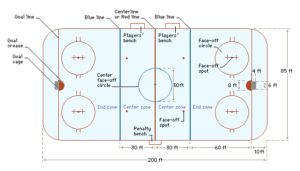
RINK SURROUNDS
The boards are a continuous wooden or fiberglass wall, often used as advertising space. The boards sit on top of the ice surface and are ideally 42” high. Except for the official league and team markings, the entire playing surface and the boards are painted white. The kickplate at the bottom of the boards is light yellow. The boards are constructed so that the surface facing the ice is smooth and free of any obstruction or any object that could cause injury to players. The doors in front of each team’s bench and the penalty box open inward, away from the playing surface, to prevent injury to players.

